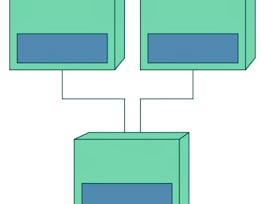Making architecture offers a unique insight into the mind and work of an Architect, starting with the basics of the profession and culminating with the production of a scaled site model. The course should act as ideal preparation for those interested in undertaking an undergraduate degree in Architecture, although its flexible, intriguing and enjoyable content makes it accessible for all those looking to increase their knowledge in the field.



(1,367 reviews)
Details to know

Add to your LinkedIn profile
See how employees at top companies are mastering in-demand skills


Earn a career certificate
Add this credential to your LinkedIn profile, resume, or CV
Share it on social media and in your performance review

There are 4 modules in this course
In this course, we're not just going to tell you what the architect does, we're going to show it to you. You're going to actually do, on a small scale, the work that an architect does.What the architect does is to have a certain vision about how things might be better. We're going to give you an introduction to that mindset and to that way of working. The study of architecture really engages all your skills. You learn how to work in teams, you learn how to communicate. You learn how to think critically and analytically. You develop all of your creative skills in the study of architecture. In this first module we are going to do three things. We're going to dispel some of the myths about what you need in order to be an architect. We're also going to talk about what an architect does and doesn't do. Then we're going to work on a short design exercise that begins to stretch your muscles to get you going on the design process.
What's included
15 videos1 peer review2 discussion prompts
What we're going to do in this module is to discuss the work of architecture in a wider context. In this we will explore the relationship the architect has with the environment (both its material environment and its social environment. So, these kinds of questions, this ability to think about an object in its broader context is what we're going to develop. By the end of the module, you're going to be able to think about and map a building's broader context. The social and material context in which a project exists.
What's included
10 videos1 peer review3 discussion prompts
In this module we are going to delve more into the technical side of architecture. We will explore essential principles such as: composition, hierarchy, balance, and space. Having learned how you interact with the environment, this is where you learn how to put your ideas into practice. You will learn what is necessary in order to ensure your structure connects with people living near it and interacting with it on a daily basis. Also, we will explore how architects use the natural and physical environment to stimulate their creative process - taking a look at incredible examples from renowned architects. Finally, you will receive tips on how to succeed in this week's assignment.
What's included
18 videos1 peer review1 discussion prompt
In this module, we focus on developing the story behind your design. All great architects have great stories and we will give you an insight to some of those in this week. We will show you how you can develop your own story which will enable you to build the necessary emotional connection to your design. Also, we educate you in how to use photography and modern tools like instagram in order to make your design look as attractive as possible to a wider audience. Finally, we will prepare you for your final and most important assignment of the course.
What's included
12 videos1 peer review2 discussion prompts
Recommended if you're interested in Music and Art

Coursera Instructor Network

University of Alberta

University of Alberta

University of Virginia
Why people choose Coursera for their career




Learner reviews
1,367 reviews
- 5 stars
83.26%
- 4 stars
12.50%
- 3 stars
2.63%
- 2 stars
0.51%
- 1 star
1.09%
Showing 3 of 1367
Reviewed on Jun 13, 2020
Model making and space analysis are two basic things I have learnt and further learnt various principles rules and many more life hacks for an architect
Reviewed on Mar 26, 2020
It's a great course to learn design thinking process as an architect. I definitely recommend it especially for those who are new to the field of architecture.
Reviewed on Aug 4, 2020
As a future architecture student I felt the course gave me a glimpse of things I could spend during my time studying the career, but in a way it was easy to understand.

Open new doors with Coursera Plus
Unlimited access to 10,000+ world-class courses, hands-on projects, and job-ready certificate programs - all included in your subscription
Advance your career with an online degree
Earn a degree from world-class universities - 100% online
Join over 3,400 global companies that choose Coursera for Business
Upskill your employees to excel in the digital economy
Frequently asked questions
Access to lectures and assignments depends on your type of enrollment. If you take a course in audit mode, you will be able to see most course materials for free. To access graded assignments and to earn a Certificate, you will need to purchase the Certificate experience, during or after your audit. If you don't see the audit option:
The course may not offer an audit option. You can try a Free Trial instead, or apply for Financial Aid.
The course may offer 'Full Course, No Certificate' instead. This option lets you see all course materials, submit required assessments, and get a final grade. This also means that you will not be able to purchase a Certificate experience.
When you purchase a Certificate you get access to all course materials, including graded assignments. Upon completing the course, your electronic Certificate will be added to your Accomplishments page - from there, you can print your Certificate or add it to your LinkedIn profile. If you only want to read and view the course content, you can audit the course for free.
You will be eligible for a full refund until two weeks after your payment date, or (for courses that have just launched) until two weeks after the first session of the course begins, whichever is later. You cannot receive a refund once you’ve earned a Course Certificate, even if you complete the course within the two-week refund period. See our full refund policy.







